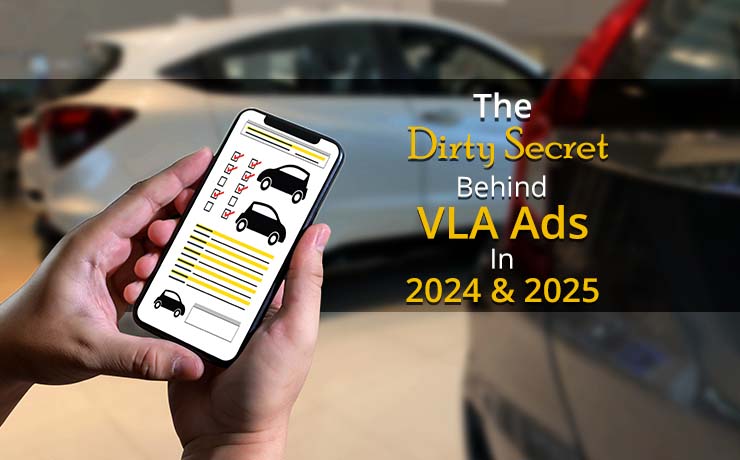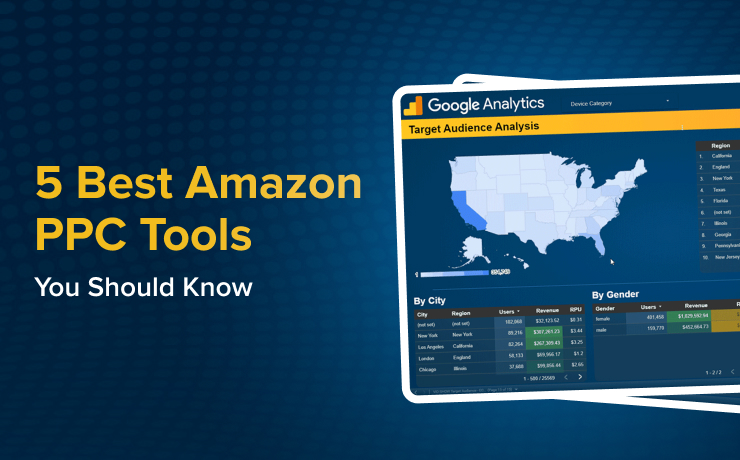
Remember the good old days? No, not when Google Ads only cost 10 cents a click (although those were good too!). The days when running Vehicle Listing Ads (VLAs) would mean you were just running VLAs! For those who didn’t notice, Google quietly (or maybe not so quietly for those who work on this stuff) moved VLA ads from “Shopping” campaigns to “Performance Max (PMAX)” campaigns. What’s the difference? With PMAX, your VLA campaigns were no longer just VLAs. Although not the most intuitive, look through your asset groups. The first hint would have been these icons under “Preview ads”:

What’s Happening with PMAX and VLAs?
What does this mean? This means that while you think you’re running Vehicle Listing Ads, you’re instead running a much broader “PMAX” campaign that has ads showing on YouTube, Gmail, Google Search, Display, and Discover Ads. While this seems innocent enough, Google has increased the amount of spend your VLA campaigns were doing outside of core VLAs throughout 2024. This included serving non-compliant AI-generated Ads and having ads shown on non-brand-appropriate websites (display network). Even worse, the PMAX campaign will often aggressively bid on your brand name (unless you implement brand exclusions) and make you start paying for traffic that you would previously get aggressively.
The Hidden Cost of PMAX Campaigns for Dealerships
Here’s where it gets even scarier – aggregating data from over 800 dealerships doing VLAs in Q3 2024 showed that only 8% of clicks came from the core Vehicle Listing Ads product. In other words, while you’re giving Google a feed of specific cars (assuming that’s what they will advertise), those cars represent only 8% of what you’re spending your ad money on! Even worse, hidden within the complexities of PMAX campaigns, it’s often difficult to deduce how much of your spend is allocated to your car inventory. It’s also challenging to separate the metrics from the other platforms Google is serving non-VLA ads on.
Upcoming Improvements for VLAs in PMAX Campaigns
The good news? There appears to be a light at the end of the tunnel. In the coming months, Google will be allowing three major improvements:
You will now be able to negative out keywords from the PMAX campaign.
In the past, this was only possible through brand exclusions and by manually filling out a form to Google (which was mostly only provided to specific agencies). Without exclusions, most VLA campaigns are serving search (non-VLA) ads to those searching for your brand name; competitor names (which in itself can be a compliance violation); and many other unrelated terms. The lowest hanging fruit here is to review the search terms of your campaign and implement brand, competitors, and other types of negatives ASAP.
There are now finally workarounds that JUST serve VLA ads in your VLA campaigns.
Imagine: you can now provide Google a feed of cars to run VLA ads, and have them JUST run as VLA Ads. Amazing. Early results from implementing this have shown us great improvements. Ironically, raw conversions seem to go down in many cases as “PMAX” tended to do what it was supposed to – generate the cheapest and most conversions possible. However, a conversion from a vague display network ad on a 3rd party website will never compare to someone converting from a true VLA ad. These ads show the user the exact car, color, mileage, price, and much more. In other words, you are now getting true high-value conversions!
A bonus improvement to VLA’s – if you’re discounting your cars OFF MSRP (specifically for new cars), you can now highlight the discount OFF MSRP in a different color in your VLA listing. We’ve been testing this for months and have seen huge lifts in conversions.
Leveraging Discounts and Highlighting MSRP Reductions
What’s next? If you’re running VLAs, this is your opportunity to revamp your VLA campaigns to make them significantly more efficient. Applying the fixes discussed in this article can help you consistently showcase your inventory at the top of the VLA results.
Check out this example of a Nissan dealership in Hillside NJ (for whom we applied these fixes):

If you’re not running VLAs, they continue to be one of the most effective ways for car dealerships to advertise their cars. We’ve seen many dealerships give up third-party platforms in favor of going direct to consumer with their car inventory feed. Now that you can once again run them as pure VLAs, they will become more relevant than before.
Here’s a bonus: You can and should also be running these on Microsoft Ads. Believe it or not, Microsoft actually beats Google in marketing Car Inventory Ads by several years. While it may not be the same volume, you need to ensure you’re in as many places as you can be and always monitoring your efficiencies.
 Free
Consultation
Free
Consultation Free
Google Ads Audit
Free
Google Ads Audit








